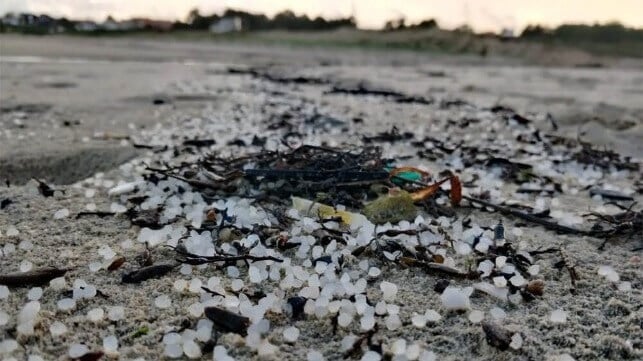Tough Regulations for Ships as EU Moves to Contain Plastic Pellet Pollution

Europe is taking measures to tackle the challenges of plastic pellet pollution with the drafting of regulations that specifically set tough obligations for ocean-going vessels. The targeting of maritime transport is due to the fact that the sector accounts for around 38 percent of all pellets transported in the European Union (EU), with cases of pollution by seagoing vessels remaining high.
The European Council contends that plastic pellet losses to the environment are the third largest source of all unintentional microplastic releases, with 50,000 to 180,000 tonnes of pellets accidentally released into the environment annually. A huge amount is released during loading or unloading operations or due to leaky containers, with the impacts being detrimental to marine life, human health, and the environment said the EC members.
Research has shown that pellets comprise about 70 percent of the plastic eaten by seabirds, with small plastic particles being found in the stomachs of 63 of the world’s approximately 250 species of seabirds.
It has also been established that by weight, plastic pellets are the second largest direct source of microplastic marine pollution with billions of individual pellets entering the ocean every year. This is due to both small and large-scale losses and spillages occurring on land and sea during all stages of the supply chain, especially while they are in transit.
The rising hazard of pellet pollution has prompted the EU to toughen regulations with the aim of preventing and reducing the unintentional release of plastic pellets into the environment during production, transport, and processing. The sponsors assert that draft regulations could reduce plastic losses to the environment by up to 74 percent.
Among the latest high-profile cases is the Maersk-chartered containership Toconao which lost containers overboard a year ago off the northern coast of Spain. Six containers fell from the Liberian-flagged boxship, with one containing at least 25,000 kilograms of white plastic pellets that washed ashore on Spanish beaches igniting an environmental and political storm. Similarly, the plastics also known as nurdles were a major source of pollution when the X-Press Pearl burnt and sank off Sri Lanka in 2021.
The new regulations specifically introduce strict obligations for sea-going vessels. To tackle plastic pellet pollution by maritime transport, the EU is laying down requirements for both EU and non-EU carriers. This includes carriers ensuring that pellets are packed in good quality packaging that is strong enough to withstand shocks and prevent any loss, providing information on containers containing pellets to the relevant authorities and agencies, and ensuring their staff are well-trained.
Operators and masters of sea-going vessels will also be required to ensure that containers containing plastic pellets are stowed under deck wherever reasonably practicable, or inboard in sheltered areas of exposed decks. In both cases, such containers must be secured to minimize hazards to the marine environment without impairing safety.
The regulations also set out measures for prevention, containment, and clean-up as well as the equipment that carriers are required to have on board when transporting pellets. When adopted into law, the maritime industry will have a one-year grace period to comply.
